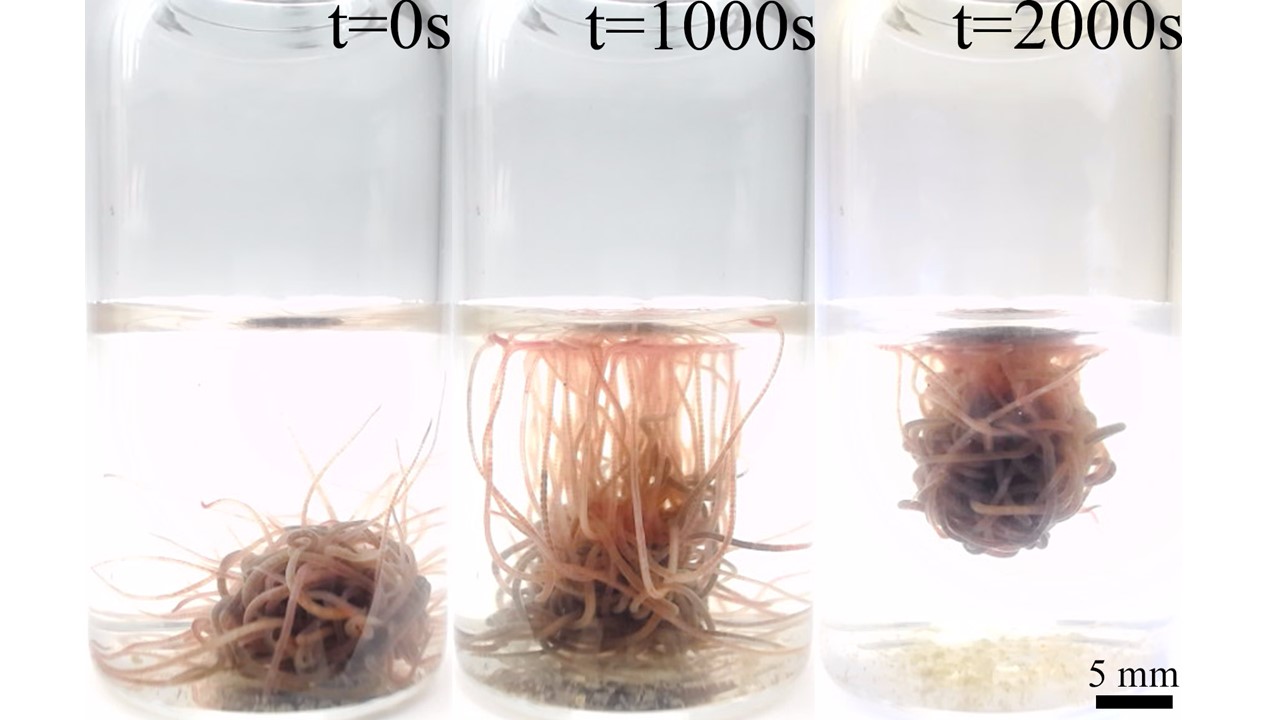(311j) Interfacial Dynamics of Entangled Living Active Matter Collectives
AIChE Annual Meeting
2022
2022 Annual Meeting
Engineering Sciences and Fundamentals
Rheology of Biomaterials and Biological Systems
Tuesday, November 15, 2022 - 2:45pm to 3:00pm
Some freshwater organisms can utilize unique surface properties of their external morphology to live on the interface of the water. In this talk, we will explore the function and mechanism of the California blackworm (Lumbriculus variegatus) worm “buoyâ€, which is a floating spherical structure created when multiple entangled worms latch onto the interface while subsequently lifting off from the ground. Blackworms are benthic organisms that measure 2-4 cm in length and are found in low flow littoral regions of shallow freshwater systems. In these anoxic waters which contain low levels of dissolved oxygen (<2 mg/L), an individual worm will typically burrow and anchor their heads downwards while concurrently projecting their tails upwards. Blackworms normally respirate through their mucous body wall and supplement respiration by using their ciliated tails. As the tail approaches the air-water interface, it bends into a right angle and stretches horizontally along the interface. Due to its material property, which we hypothesize consists of an alternating pattern of hydrophobic and hydrophilic segments and intersegments, a portion of the tail’s skin break surface tension. The hydrophobic regions dewet which allow a worm hang freely onto the surface. We estimate that an average worm weighing 7 mg (in air) can latch and support itself by exposing only 1 patterned segment on the interface which we validate with simple physical models and force measurements. Further, an individual worm can dynamically adjust the latching force by exposing more or less of its tail. When placed in smooth substrates, individuals emergently form a physically entangled collective and utilizes this supporting structure to lift their tails. As more individuals “latch†onto the surface, we discover that they can ascend from the ground, creating a floating “worm buoyâ€. We hypothesize that this structure allows smaller worms to reach the surface for respiration.


